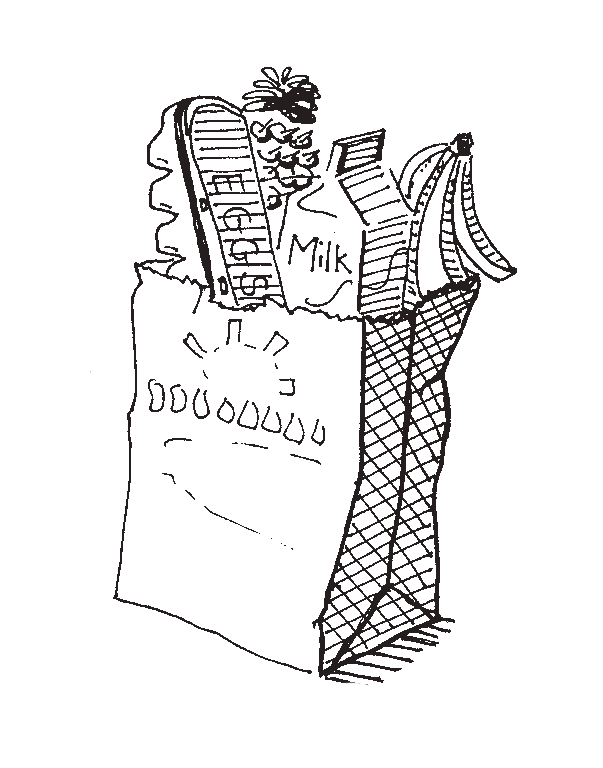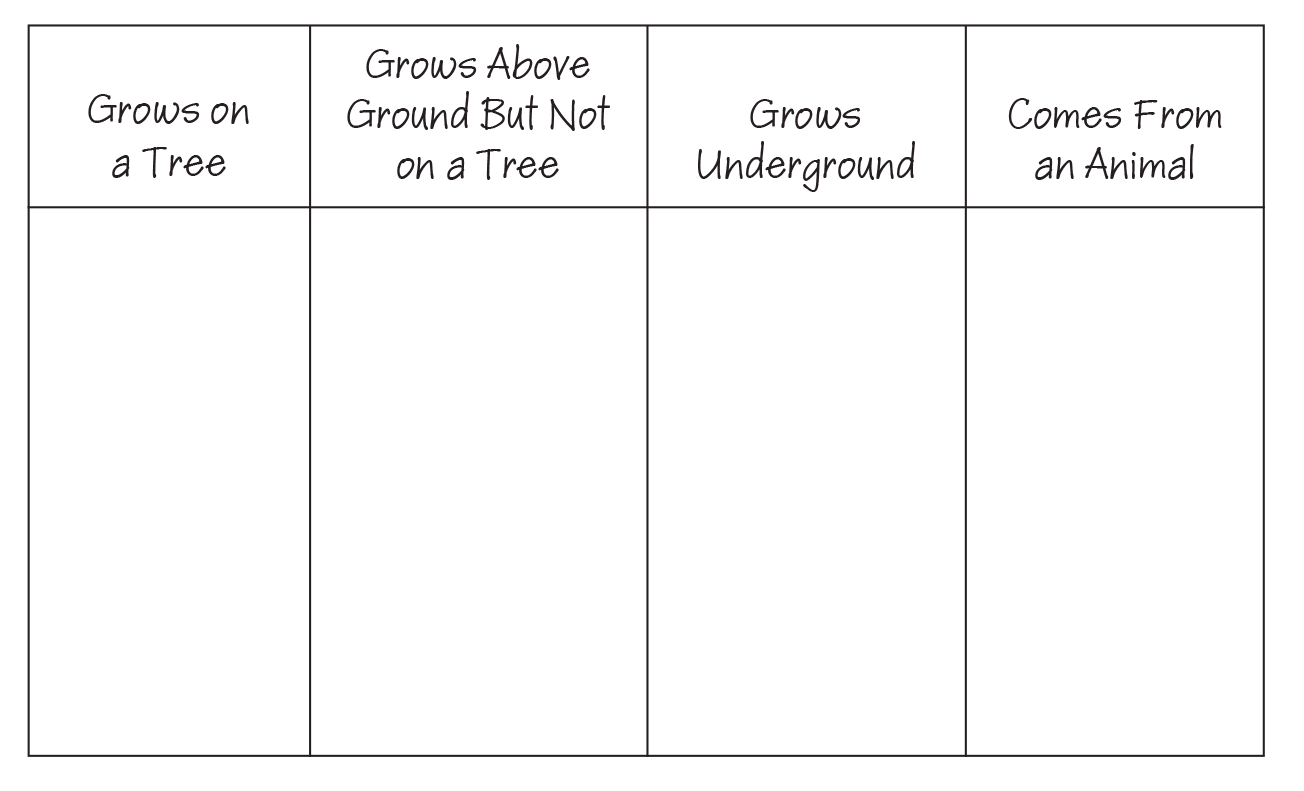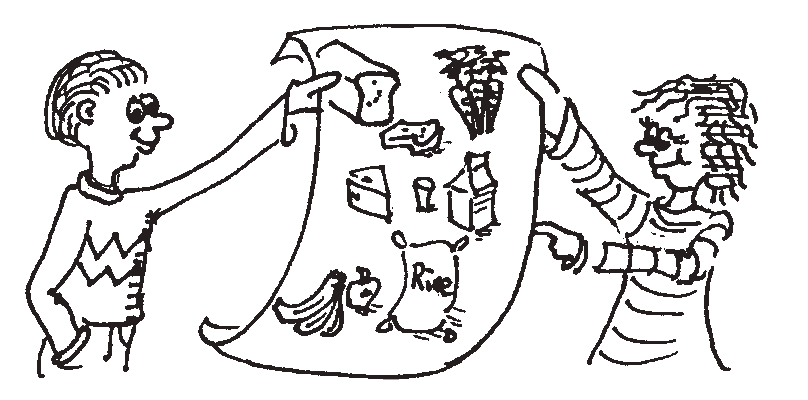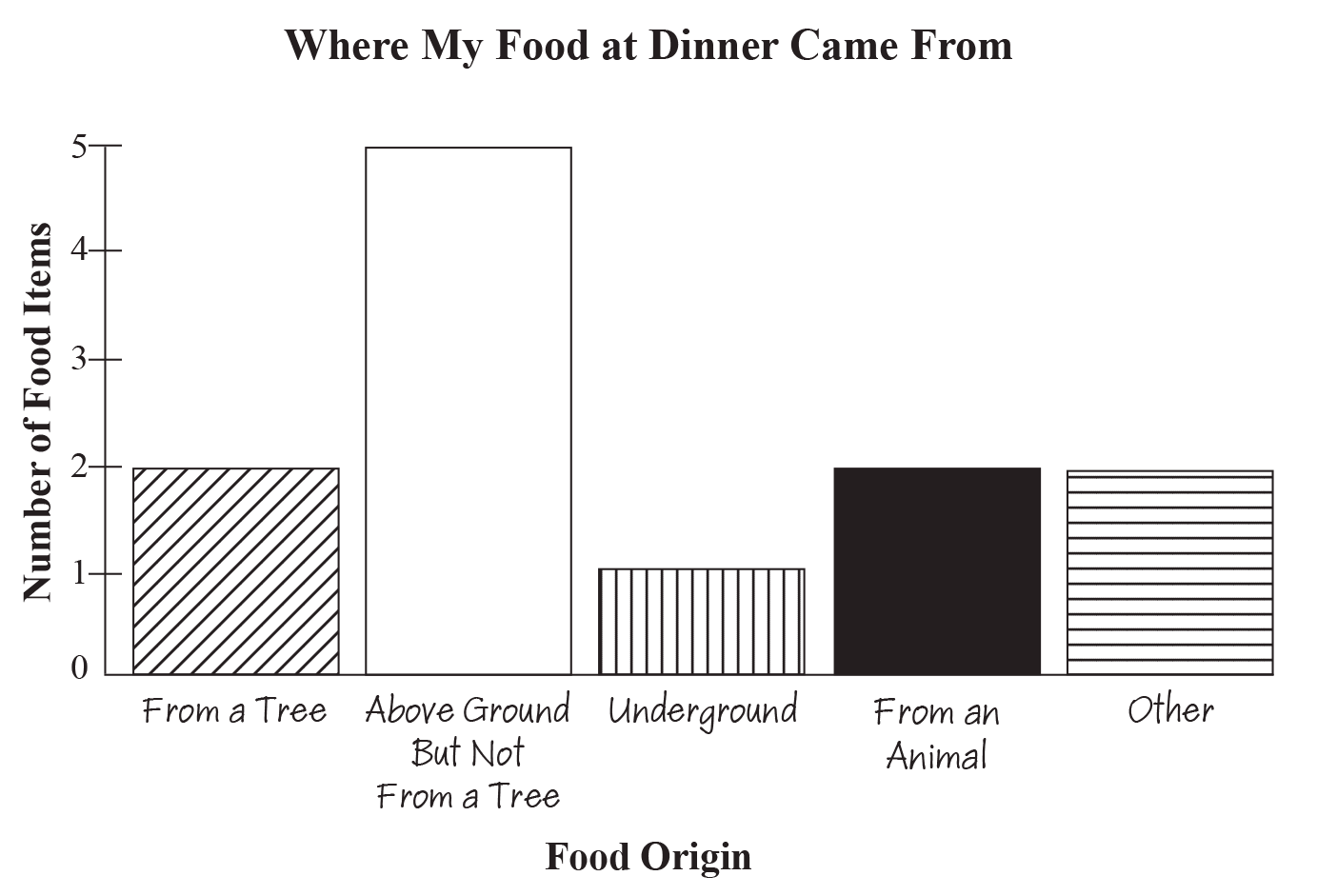Since all students eat food and wear clothing, one natural connection between education and the real world is agriculture. Advances in agricultural technology are continually making headlines and are an excellent way for educators to connect current trends and innovations to the lives of every student. Give the questions below some thought. These questions are commonly asked by children when shopping in a grocery store with an adult.
- How much does it cost?
- Where does steak come from?
- Why are there scales in the produce section of the grocery store?
- Is this healthy?
- Is it on sale?
- How much change will I get in return?
- How did this food get to the grocery store?
- Who grew this food?
Grocery shopping provides many opportunities for children to gain knowledge about mathematics, nutrition, and agriculture. Edible Numbers provides teachers with lessons that relate experiences in the grocery store to classroom mathematics and nutrition education. For this lesson, student experience shopping in a grocery store would be required for helping them gain an understanding for categorizing foods, identifying where certain foods come from, and analyzing food nutrition.
 Food origins, nutrition, and grade-level appropriate mathematics (addition, subtraction, multiplication, division, graphing, problem solving, and statistics) are taught in this lesson. The interdisciplinary approach in Edible Numbers makes it suitable for self-contained classrooms, core, and home school settings. Grocery advertisement scavenger hunts are the highlight of this unit. Use them as they are written, or incorporate single lessons from the unit into an already established curriculum.
Food origins, nutrition, and grade-level appropriate mathematics (addition, subtraction, multiplication, division, graphing, problem solving, and statistics) are taught in this lesson. The interdisciplinary approach in Edible Numbers makes it suitable for self-contained classrooms, core, and home school settings. Grocery advertisement scavenger hunts are the highlight of this unit. Use them as they are written, or incorporate single lessons from the unit into an already established curriculum.
Food can be classified in a variety of ways. For example, meat is the flesh of an animal used as food. A vegetable is a plant or plant part, such as leaves from kale or a stem from asparagus, that we eat. Some vegetables, such as potatoes, are classified as tubers. A tuber is a thickened underground portion of a stem that bears buds. Fruits are the sweet and fleshy product of a tree or plant containing seeds, such as strawberries or oranges.
In this activity, students classify foods according to their origins. There is no set way of classifying food in this manner; however, the following four groupings may be used—food that grows on a tree, food that grows above ground but not on a tree, food that grows underground, and food that comes from an animal. Feel free to have the students form different classification headings. The idea is to practice sorting and to establish a common vocabulary for use in the upcoming scavenger hunt lesson. Examples of food from the various categories are described below:
 Nutrition fact labels provide information that can be useful when determining the nutritional value of a product. They contain the recommended daily allowance, known as the RDA which is the estimated amount of calories per day, determined by the Food and Nutrition Board of the National Research Council and the National Academy of Sciences, necessary for good health. The ingredients are listed in order of quantity. For example, the main ingredient in a cherry breakfast bar is wheat flour, which is produced by a grain that is a cultivated cereal crop used as food. The second ingredient is sugar, and the third ingredient is cherries. If this were a food your students were to record on a chart, they would check three or more boxes—Grows Above Ground But Not On a Tree for the wheat, Grows Underground for the sugar, Grows on a Tree for the cherries, etc.
Nutrition fact labels provide information that can be useful when determining the nutritional value of a product. They contain the recommended daily allowance, known as the RDA which is the estimated amount of calories per day, determined by the Food and Nutrition Board of the National Research Council and the National Academy of Sciences, necessary for good health. The ingredients are listed in order of quantity. For example, the main ingredient in a cherry breakfast bar is wheat flour, which is produced by a grain that is a cultivated cereal crop used as food. The second ingredient is sugar, and the third ingredient is cherries. If this were a food your students were to record on a chart, they would check three or more boxes—Grows Above Ground But Not On a Tree for the wheat, Grows Underground for the sugar, Grows on a Tree for the cherries, etc.
Students will examine one specific meal and classify it into the categories they used in the introductory activity. If you feel an evening meal is not appropriate for your students to examine, have them analyze their breakfast or lunch meal. The idea is to have students take a closer look at what they are eating so they understand where their food comes from and identify a farmer's role in producing food. At the same time, the students will be asked to think of how they could have altered their meal to make it more nutritious.
 Food origins, nutrition, and grade-level appropriate mathematics (addition, subtraction, multiplication, division, graphing, problem solving, and statistics) are taught in this lesson. The interdisciplinary approach in Edible Numbers makes it suitable for self-contained classrooms, core, and home school settings. Grocery advertisement scavenger hunts are the highlight of this unit. Use them as they are written, or incorporate single lessons from the unit into an already established curriculum.
Food origins, nutrition, and grade-level appropriate mathematics (addition, subtraction, multiplication, division, graphing, problem solving, and statistics) are taught in this lesson. The interdisciplinary approach in Edible Numbers makes it suitable for self-contained classrooms, core, and home school settings. Grocery advertisement scavenger hunts are the highlight of this unit. Use them as they are written, or incorporate single lessons from the unit into an already established curriculum. Nutrition fact labels provide information that can be useful when determining the nutritional value of a product. They contain the recommended daily allowance, known as the RDA which is the estimated amount of calories per day, determined by the Food and Nutrition Board of the National Research Council and the National Academy of Sciences, necessary for good health. The ingredients are listed in order of quantity. For example, the main ingredient in a cherry breakfast bar is wheat flour, which is produced by a grain that is a cultivated cereal crop used as food. The second ingredient is sugar, and the third ingredient is cherries. If this were a food your students were to record on a chart, they would check three or more boxes—Grows Above Ground But Not On a Tree for the wheat, Grows Underground for the sugar, Grows on a Tree for the cherries, etc.
Nutrition fact labels provide information that can be useful when determining the nutritional value of a product. They contain the recommended daily allowance, known as the RDA which is the estimated amount of calories per day, determined by the Food and Nutrition Board of the National Research Council and the National Academy of Sciences, necessary for good health. The ingredients are listed in order of quantity. For example, the main ingredient in a cherry breakfast bar is wheat flour, which is produced by a grain that is a cultivated cereal crop used as food. The second ingredient is sugar, and the third ingredient is cherries. If this were a food your students were to record on a chart, they would check three or more boxes—Grows Above Ground But Not On a Tree for the wheat, Grows Underground for the sugar, Grows on a Tree for the cherries, etc.

 Review mathematics vocabulary with your students. The terms they should understand include sum, difference, total price, product, place value in decimals, etc. Students will search through grocery advertisements to find a part of an advertisement that satisfies a particular problem on the scavenger hunt.
Review mathematics vocabulary with your students. The terms they should understand include sum, difference, total price, product, place value in decimals, etc. Students will search through grocery advertisements to find a part of an advertisement that satisfies a particular problem on the scavenger hunt.